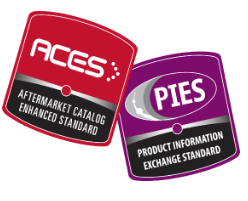
By Joe Williams, Magento Solutions Specialist for InteractOne
The automotive eCommerce market is flooded with competition, primarily due to the availability of dropship suppliers and endless niche opportunities for retailers to focus on. With MAP pricing and relatively standard product offerings, the best way to differentiate your automotive aftermarket site is a stellar customer experience and content.
Let’s face it – it’s difficult to create a different customer experience, let alone a superior one when using one of the several automotive-specific eCommerce platforms on the market today. Magento is the best platform to create an enterprise-level auto parts website, but don’t expect a small monthly payment to cover everything. If you want cookie-cutter prices, you’re going to get a cookie-cutter website.
The two biggest challenges we help automotive eCommerce merchants resolve include data and functionality, both on the frontend and in the admin.
Fitment Data
Manufacturers, distributors, and retailers all feel the challenges of automotive product and fitment data. ACES and PIES have become the standard, but strict data standards often leave a lot to be desired when it comes to flexibility to create a superior customer experience. 
Also, data is available from a wide array of sources in the automotive aftermarket, such as (but not limited to) DCI, SDC, ASAP Network, and direct from manufacturers. Your data drives your customer experience, and none of the data sources available are plug-and-play to work well with each other. eCommerce retailers need to be able to update fitment data and add new products quickly, so ease of maintenance is important. They also need to display the data in a customer-friendly manner to help drive a better experience than the competition.
Vehicle lookup tools are the default go-to for finder functionality, but multiple challenges can arise through the process. Such as when creating a search engine friendly structure to have dynamic vehicle landing pages with custom content.
Another challenge for fitment data is maintenance. Price updates, superseding part numbers, new part numbers, new product lines, new fitment and changes to fitment are all easier with a strong import/export utility. But nothing exists out of the box, and basic parts finder extensions create their own fitment tables. Therefore, many merchants are stuck having to run multiple imports to update product data (PIES) separate from fitment data (ACES). This can be a huge time suck, and add technical overhead to your servers when processing imports and reindexing.
Retaining Default Functionality
The challenge with vehicle lookup functionality is that no mainstream eCommerce platform has attributes that function sequentially the way a Year/Make/Model/Submodel filter needs to work. There are several parts finder extensions available on the Magento Marketplace, and some of them are good. But, what if you want to use configurable products or some other native functionality the module doesn’t allow out of the box? For example, a new Magento 2 automotive eCommerce website for lighting and truck accessories manufacturer, Putco, needed the ability to utilize configurable products for distributors to reference features and benefits content. We created a custom vehicle fitment module with the ability to use all product types within Magento 2, as well as an import routine that maps fitment data to the parent configurable products based on simple product mappings.
Many merchants then decide to hire an offshore extension developer to add functionality. Often times, offshore developers do not fully understand the needs of the merchant. Sadly, an endless trail of feature development begins. Before you know it, you can’t upgrade your Magento website and you have to follow a convoluted process to even try. Oh, and the Custom Options functionality was hijacked for something else, so you can’t use those. (Ooops.)
The Customization Trap
Custom development often seems like a good starting point to implement an extension that gives you most of the functionality you need. However, it can often be a bad decision in the long run. It’s what we refer to as the “Magento Customization Trap.” Over-customization adds unnecessary technical debt, and often a lot of frustration throughout the lifespan of your website.
After many customization headaches, some merchants end up thinking they need to re-platform to get away from Magento. They often go to a cookie cutter platform that doesn’t solve the original problem. Thus, creating an endless cycle.
The Magento and Automotive Experience
For automotive eCommerce merchants, it’s important to choose a developer that fully understands Magento and the automotive industry to prevent over-customization from the beginning.
Automotive eCommerce merchants generally require more complex functionality and often choose Magento because of its scalability and reputation. Choose a partner that understands the data and needs of your business to create a thoroughly scoped project. Avoid that frustration and miscommunication that comes from a developer that doesn’t fully understand the automotive industry.
Contact us to learn more about Magento customization for automotive eCommerce websites. We’ve helped many automotive eCommerce merchants with their eCommerce websites over the years including a merchant that migrated from Volusion to Magento and another we helped to remedy Magento performance issues.
